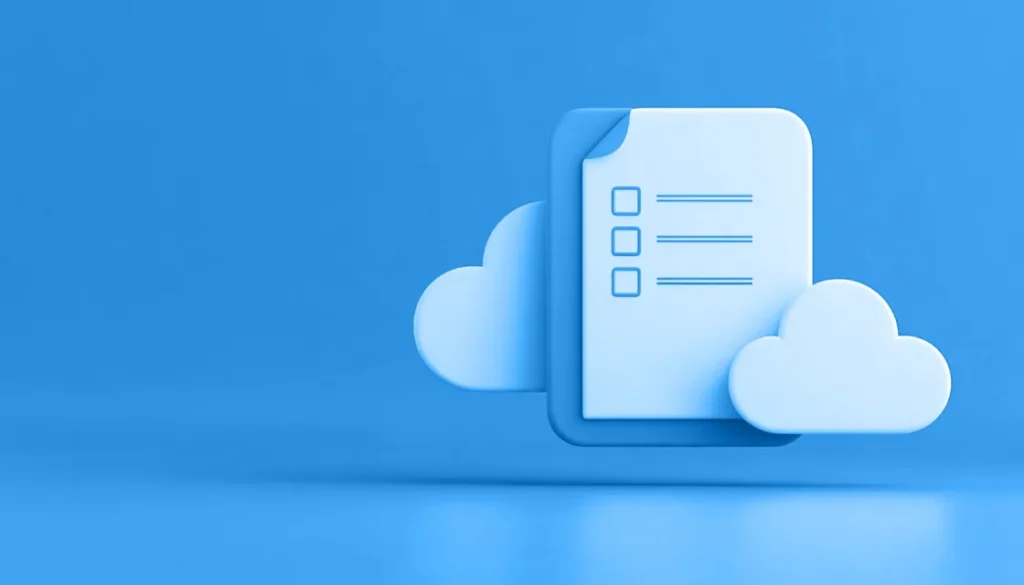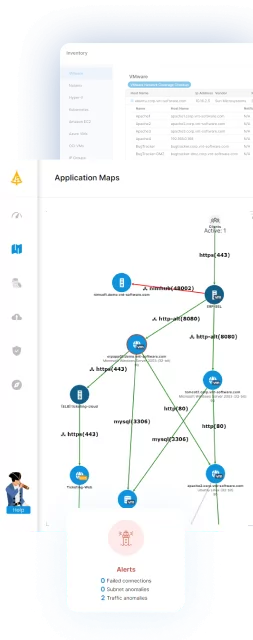What Is Business Continuity Software?
Business continuity software helps organizations prepare for, respond to, and recover from disruptions to their operations. It provides tools and automation for tasks like risk assessments, business impact analyses, plan creation and testing, and communication during emergencies. It simplifies the entire business continuity and resilience process.
Business continuity platforms provide a structured approach to identifying risks, managing crisis workflows, and planning for operational resilience. This type of software also supports proactive planning by simplifying documentation, supporting regular testing, and ensuring ongoing updates of continuity plans. It acts as a central repository for policies, plans, and post-incident reviews.
Table of Contents
ToggleCore Capabilities of Business Continuity Software
Business Impact Analysis (BIA)
Business impact analysis (BIA) is a foundational component of business continuity software. The BIA process evaluates the potential consequences of business disruptions by identifying critical business functions, operational dependencies, and vital resources. Software platforms make this assessment systematic and repeatable, enabling companies to collect quantitative and qualitative data about the risk factors and prioritize assets according to their criticality to business operations.
A BIA within continuity software helps quantify the potential losses from downtime, such as lost revenue, regulatory fines, and reputational damage. The software provides visual tools to map dependencies and automate calculations of recovery time and recovery point objectives. With this data in hand, organizations can develop targeted recovery strategies.
Dependency Mapping and Relationship Tracking
Dependency mapping tracks and visualizes the relationships between business processes, IT systems, third parties, and infrastructure. By using software tools, organizations can generate real-time maps that illustrate how the failure of one element—such as a network segment or supplier—could trigger cascading impacts across the enterprise. This insight is critical for identifying single points of failure and ensuring continuity strategies are comprehensive.
Modern business continuity software enables dynamic updates to these dependency maps as technology stacks and business processes evolve. Relationship tracking functionality allows teams to link assets, workflows, and responsibilities. This clarity improves coordination during exercises or actual incidents and reveals areas where redundancies or additional controls are needed.
Automated Plan Creation and Maintenance
Automated plan creation simplifies the laborious process of building, updating, and distributing business continuity plans. Business continuity software offers templates, guided wizards, role-specific workflows, and content libraries to ensure plans are consistent and complete. This automation reduces manual error and speeds up the creation of actionable, role-specific response strategies.
The maintenance component is just as critical, as organizations must update plans regularly to reflect changing risks, regulations, and business objectives. Good business continuity software automates plan reviews and reminders for testing or updates. Version control features track changes, ensuring that teams always have access to the most current procedures and can demonstrate compliance during audits or regulatory reviews.
Real-Time Monitoring and Dashboards
Real-time monitoring is a key advantage of digital continuity platforms. These tools ingest data from sensors, IT systems, and communication platforms to track disruptions, status changes, and critical events as they happen. Dashboards provide an at-a-glance overview of the organization’s resilience status, highlighting alerts, incident progress, recovery actions, and resource allocation in real time.
Having access to live metrics allows decision-makers to react quickly, coordinate efforts across teams, and proactively address bottlenecks or resource gaps during an incident. Dashboards are often customizable for different user roles—executives see high-level impacts while operations teams drill into workflows.
Reporting and Compliance Readiness
Robust reporting features in business continuity software support both day-to-day management and strategic oversight. These tools automate the collection of test results, incident logs, plan changes, and staff participation. Reports can be customized to demonstrate readiness, highlight improvements, or show action items for ongoing program development. Visualization tools and analytics aid in identifying trends and gaps in preparedness.
Compliance is a critical driver for many organizations adopting these platforms. Business continuity software simplifies the creation of compliance documentation for standards such as ISO 22301, FFIEC, and others. Automated audit trails, evidence collection, and policy tracking make it easier to demonstrate adherence during external reviews.
Related content: Read our guide to business continuity management
Notable Business Continuity Software
1. Faddom
Faddom is an agentless application dependency mapping platform that supports business continuity by providing real-time visibility into all application and infrastructure dependencies across both on-premises and cloud environments. It helps organizations identify single points of failure, assess the impact of outages, and keep recovery plans aligned with the current IT landscape.
Key features include:
- Agentless and easy to deploy: Faddom is fully operational in under 60 minutes and requires no credentials or agents, making it quick and non-intrusive to implement in complex environments.
- Dependency mapping: Automatically discovers and maps infrastructure and service relationships to support impact analysis and continuity planning.
- Support for Business Impact Analysis: Enables visibility into critical systems and their dependencies, helping organizations to prioritize recovery objectives effectively.
- Change management: Continuously updates dependency maps to reflect changes in the IT environment, ensuring accurate and up-to-date recovery plans.
- Outage simulation: Allows teams to model potential failures and validate the robustness of continuity and recovery strategies.
Discover how Faddom can support your business continuity strategy by booking a demo through the form on the right!
2. Quantivate
Quantivate business continuity software offers a solution for developing and maintaining business continuity and disaster recovery (BC/DR) plans. It centralizes continuity documentation, helps organizations identify and manage risks, and provides tools for crafting and testing resilient recovery strategies.
Key features include:
- Centralized data management: Consolidates business continuity and disaster recovery plans into a single digital platform, reducing reliance on paper-based or disconnected systems.
- Business impact analysis (BIA): Helps assess risks and prioritize critical operations by analyzing the potential impact of disruptions.
- Guided plan development: Offers question-based templates and a word processor interface for quick plan creation.
- Customizable templates: Pre-built templates for various scenarios such as business continuity, crisis management, and disaster recovery, tailored to meet organizational needs.
- Reporting and dashboards: Enables tracking of BC/DR activities and generates visual reports for improved decision-making and compliance management.
Source: Quantivate
3. SAI360
SAI360’s Business Continuity Management (BCM) software helps organizations respond to disruptions and maintain productivity. Part of the SAI360 GRC Platform, this solution integrates risk assessment, crisis management, and recovery planning, enabling organizations to act swiftly in times of crisis.
Key features include:
- Risk and resilience integration: Connects enterprise risks to critical processes, assets, and vendors.
- Business impact analysis (BIA): Calculates recovery time objectives (RTOs) and recovery point objectives (RPOs), helping organizations prioritize resources and plan accordingly.
- Collaborative data sharing: Breaks down silos by aligning teams with a shared risk language and centralized data.
- Plan creation and testing: Enables the development of continuity plans with simulations, automated testing, and exercises to validate the effectiveness of recovery strategies.
- Crisis management and execution: Enables activation of crisis plans, task assignment, and monitoring from a single dashboard, with mobile notifications and recovery workflows.
Source: SAI360
4. LogicManager
LogicManager’s BCM software helps organizations plan for and manage risks associated with disruptions and disasters. It offers centralized access to business continuity and disaster recovery data, allowing organizations to create, update, and test continuity plans, engage stakeholders, and track incidents through automated workflows.
Key features include:
- Centralized data management: Consolidates business continuity, disaster recovery, and risk management data into a unified platform.
- Link risks to continuity plans: Uses taxonomy technology to link critical business risks directly to the appropriate continuity plans.
- Business impact analysis (BIA): Provides pre-built templates to assess and evaluate the criticality of each business process, helping prioritize recovery efforts.
- Automated task management: Improves coordination between continuity teams with automated alerts, reminders, and tasks to ensure efficient response and recovery during disruptions.
- Incident tracking: Offers templates to track disaster events, identify plan gaps, and document lessons learned.
Source: LogicManager
5. Riskonnect
Riskonnect’s Business Continuity & Resilience software helps organizations prepare for disruptions, minimize downtime, and improve operational resilience. By centralizing business continuity and crisis management efforts, it provides tools to automate processes, identify vulnerabilities, and ensure response during emergencies.
Key features include:
- Centralized plan management: Access and manage business continuity and resilience plans from one centralized location, with automated reviews and approvals.
- Vulnerability identification: Uncover hidden vulnerabilities and program gaps through risk assessments and scenario modeling.
- Crisis response: Activate response plans, track tasks, and manage coordination during disruptions using live situation reporting, online plan activation, and secure communication tools.
- Emergency notification: Use notification tools to drive emergency communications, with mobile support for crisis coordination and task management during a disruption.
- Scenario testing and stress-testing: Model the impact of potential disruptions on critical business services and stress-test continuity plans against real-world scenarios.
Source: Riskonnect
6. iGrafx
iGrafx’s Business Process Management (BPM) software provides a solution for organizations looking to optimize their end-to-end operations. By combining process modeling, performance monitoring, and continuous improvement, it helps organizations drive efficiency, ensure compliance, and align operations with strategic goals.
Key features include:
- End-to-end process governance: Centralizes the management and optimization of business processes to ensure alignment with organizational objectives, compliance standards, and operational efficiency.
- Agility & innovation: Enables the continuous monitoring and refinement of processes to keep pace with evolving business needs, market conditions, and technological advancements.
- Data-driven decision making: Provides insights into process performance to identify bottlenecks, improve workflows, and increase productivity through data-driven analysis.
- Visual process modeling: Create BPMN, VSM, and Customer Journey models with tools that scale with company needs. Users can develop process models with natural language or document uploads using Pia, the Process Intelligence Assistant.
- Process governance framework: Defines, documents, and manages business processes in a centralized platform.
Source: iGrafx
7. Archer Resilience Management
Archer Resilience Management software helps organizations automate business continuity and disaster recovery planning, ensuring that they can continue operations or recover quickly during crises. Focusing on both proactive and reactive strategies, it provides an approach to managing risks and disruptions, helping ensure business operations remain uninterrupted.
Key features include:
- Automated business continuity planning: Simplifies the creation and execution of business continuity and disaster recovery plans, ensuring the organization is prepared for crises.
- Business impact analysis (BIA): Identifies critical, time-sensitive processes and resources within the organization, helping prioritize recovery efforts.
- Recovery procedures: Helps document and implement recovery procedures for restoring business functions and processes.
- Crisis management framework: Provides a structured framework for recognizing internal and external risks, with an integrated approach to maintaining business functions during disasters or interruptions.
- Team coordination: Enables the creation of a business continuity team, ensuring that experts from different fields collaborate on response strategies and disaster recovery plans.
Source: Archer
8. ParaSolution
ParaSolution offers an automated approach to Business Continuity Management that enables organizations to visualize data, comply with best standards, and scale BCM activities securely. It centralizes, standardizes, and automates BCM functions to support decision-making and recovery during disruptions.
Key features include:
- BCM module: Supports the entire BCM process, including business impact analysis (BIA), risk assessment, plan development and activation, exercises, crisis and incident management, and reporting.
- Crisis management & EMNS: Automates crisis management workflows to track incidents, notify key team members, and integrate with communication and alert tools for updates during disruptions.
- IT disaster recovery management: Enables collaboration between BCM and IT disaster recovery (DR) teams, supporting IT BIA, DR orchestration, run books, test coordination, and live recovery.
- Vendor risk management: Helps manage the business continuity readiness of third-party vendors by using pre-built forms and automated workflows to assess and mitigate associated risks.
- Integrated risk management: Provides an approach to risk management, helping organizations identify, prioritize, and treat risks while mapping dependencies and defining risk appetite.
Source: ParaSolution
Conclusion
Business continuity software provides organizations with the tools to build, maintain, and execute robust resilience programs. By centralizing critical continuity functions and automating workflows, these platforms enable faster responses to disruptions and support ongoing operational stability. They also help align business continuity practices with industry standards and regulatory requirements, ensuring organizations are better prepared to withstand and recover from unexpected events.







